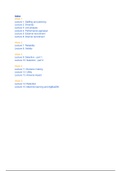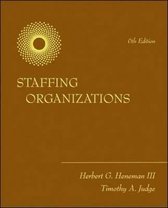Summary
Full Summary - Personnel Instruments - RUG Msc
- Course
- Institution
- Book
This is a full summary of the required course material for the RUG Master course Personnel Instruments (Semester 2 - Period 1) (2021). The summary includes all required chapters from the book, as well as a summary of all lectures for this course. Besides, all the required articles are also summariz...
[Show more]




